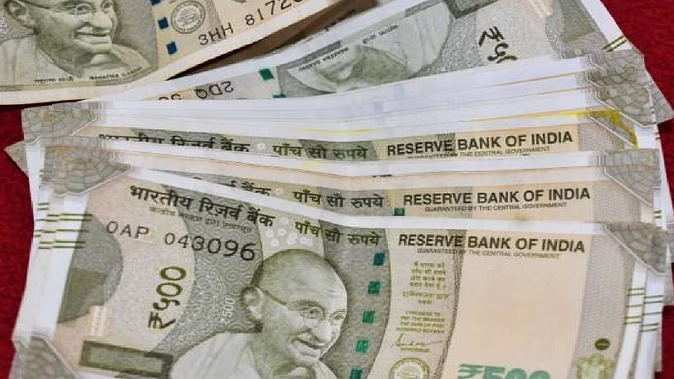 After the RBI's announcement of increasing the repo rate by 0.40 percent on Wednesday, three government and one private bank have increased the interest rates of other loans including home. Other banks are also preparing to increase interest rates. Information about other terms related to business and banking sector including Repo Rate, Reverse Repo Rate, CRR, Monetary Policy is less known to common people. Learn about these terms here.
After the RBI's announcement of increasing the repo rate by 0.40 percent on Wednesday, three government and one private bank have increased the interest rates of other loans including home. Other banks are also preparing to increase interest rates. Information about other terms related to business and banking sector including Repo Rate, Reverse Repo Rate, CRR, Monetary Policy is less known to common people. Learn about these terms here. Repo Rate: On Wednesday, the Reserve Bank of India had announced an increase of 0.40 percent in the repo rate. After this announcement of RBI, even after 24 hours, three government and one private bank have increased the interest rates of other loans including home. Obviously, with the increase in the interest rate of banks, the EMI will also increase. However, information about other terms related to business and banking sector including Repo Rate, Reverse Repo Rate, CRR, Monetary Policy is less known to common people. So here with an example, know in colloquial language, what will be the effect of increasing the repo rate on you?
Repo Rate: On Wednesday, the Reserve Bank of India had announced an increase of 0.40 percent in the repo rate. After this announcement of RBI, even after 24 hours, three government and one private bank have increased the interest rates of other loans including home. Obviously, with the increase in the interest rate of banks, the EMI will also increase. However, information about other terms related to business and banking sector including Repo Rate, Reverse Repo Rate, CRR, Monetary Policy is less known to common people. So here with an example, know in colloquial language, what will be the effect of increasing the repo rate on you?
Before knowing what will be the effect on us due to increase in repo rate, it is important to know that what is Repo Rate, Reverse Repo Rate, CRR, Monetary Policy? So let's first know about these banking terms- 1- Repo Rate
1- Repo Rate
Repo rate means the rate of loan given by the Reserve Bank to other banks. Meaning the interest rate at which the Reserve Bank gives interest to other banks of the country. The low repo rate means that banks will give home loans, vehicle loans and other loans to their customers at low interest rates. Repo rape has been increased in the past. Due to this the bank is also increasing its interest rate.
2- Reverse Repo Rate
Reverse repo rate is the rate at which banks get interest on money deposited with RBI. Reverse repo rate controls the liquidity of cash in the markets. From time to time, according to the arrangement and demand of that period, RBI increases the reverse repo rate, so that banks deposit their money with it to earn more interest.
3- CRR (Cash Reserve Ratio)
According to the banking system of India, all the banks in the country have to keep a certain part of their total cash with the Reserve Bank. This is called Cash Reserve Ratio (CRR) or Cash Reserve Ratio.
4 - SLR (Statutory Liquidity Ratio)
Liquidity or liquidity allows an asset or asset to be converted into ready cash without affecting its market price. The most liquid asset is cash itself. The two main types of liquidity include market liquidity and accounting liquidity. Current, quick and cash ratios are the most commonly used to measure liquidity.
5. Monetary Policy
Monetary policy or monetary policy is the policy adopted by the country's central banks to control the money supply and promote sustainable economic development to achieve economic goals. Monetary policy tools include managing open market operations, direct lending to banks, bank reserve requirements, unconventional emergency lending programs and market requirements—subject to central bank credibility.
How much will your EMI increase due to the increase in the repo rate
If a person has taken a home loan of Rs 30 lakh for 20 years at 7.5 percent interest rate and now pays an EMI of Rs 24,168 every month on it, now the monthly installment will increase to Rs 24,907 under the increased interest rate. Might be possible. That is, you will pay 739 more installments every month. Because after increasing the repo rate, the interest rate of your loan will also increase to 7.9 percent.
The burden of Rs 1.77 lakh will increase over the entire loan tenure.
If we talk about the entire loan tenure of 20 years, then according to the earlier interest rate, the customer would have to pay a total of Rs 28,00,271 as interest in 20 years. But now after increasing the repo rate, due to the increase in the interest rate, the total interest liability will be Rs 29,77,636. Thus, based on the new interest rate, the total burden will increase by Rs 1,77,365.
The reason for increasing the repo rate was told to inflation
On Wednesday, Reserve Bank of India Governor Shaktikanta Das increased the repo rate by 0.40 percent to 4.40 percent. Controlling inflation has been cited as the reason behind this increase. The RBI governor said that inflation, geopolitical tension, rising crude oil prices and other material prices have had a profound effect on India's economy. To control this, it became necessary to increase the repo rate.










